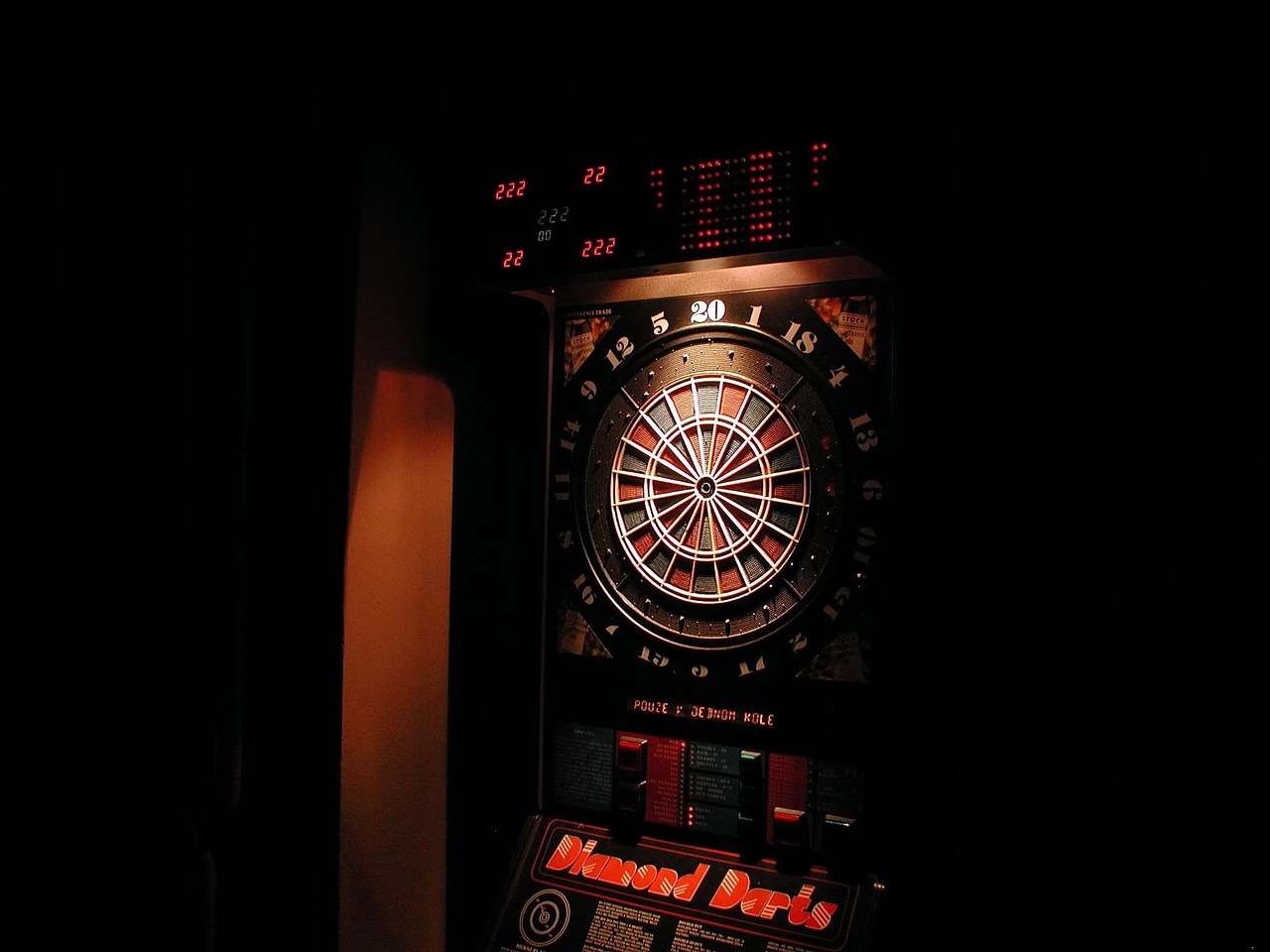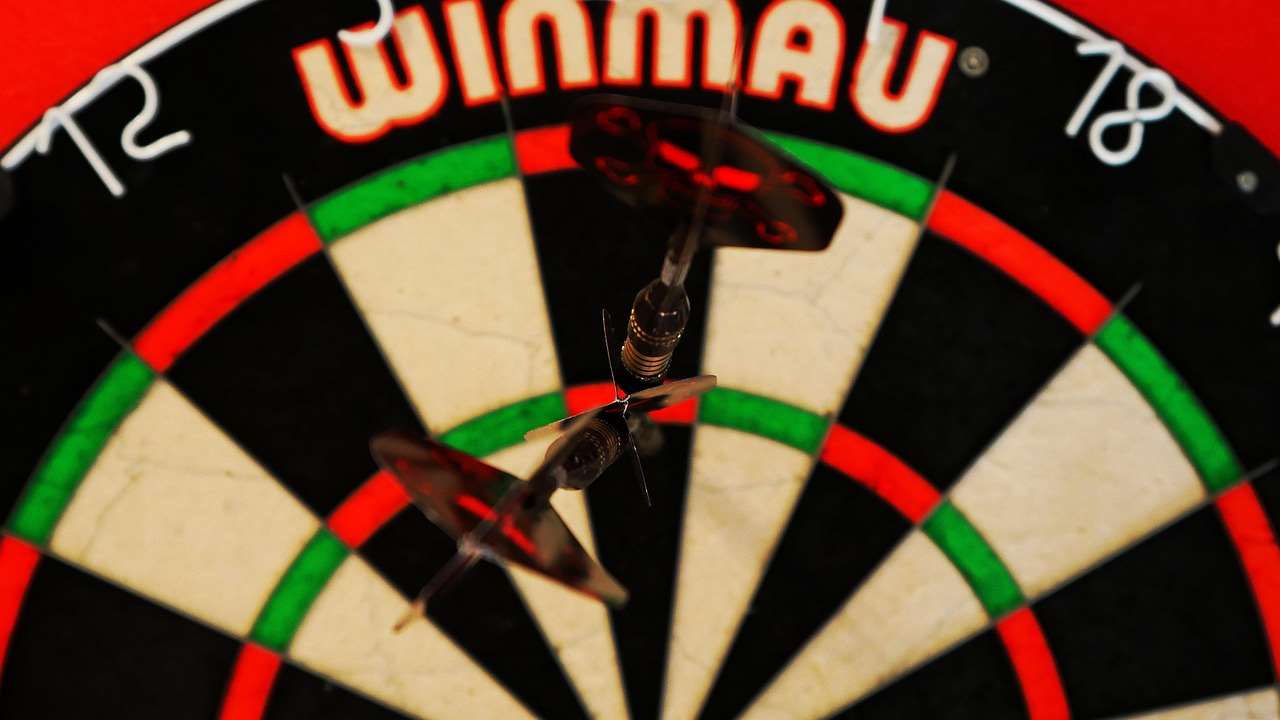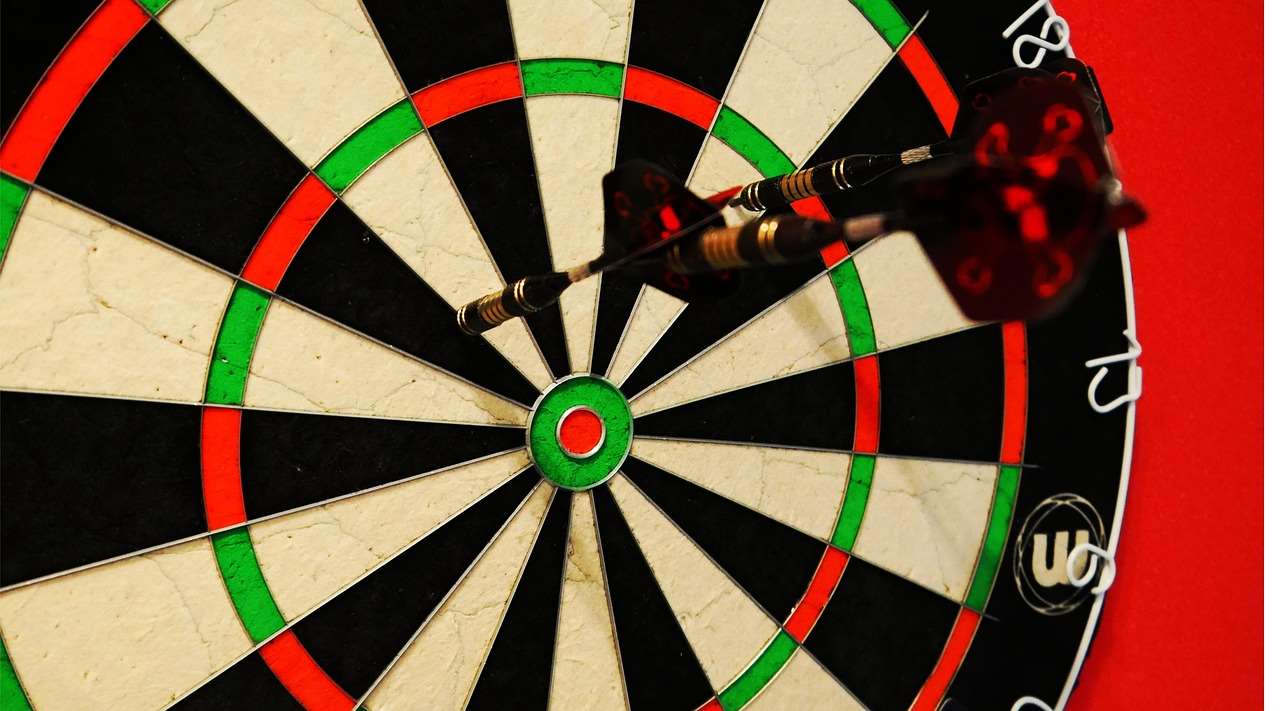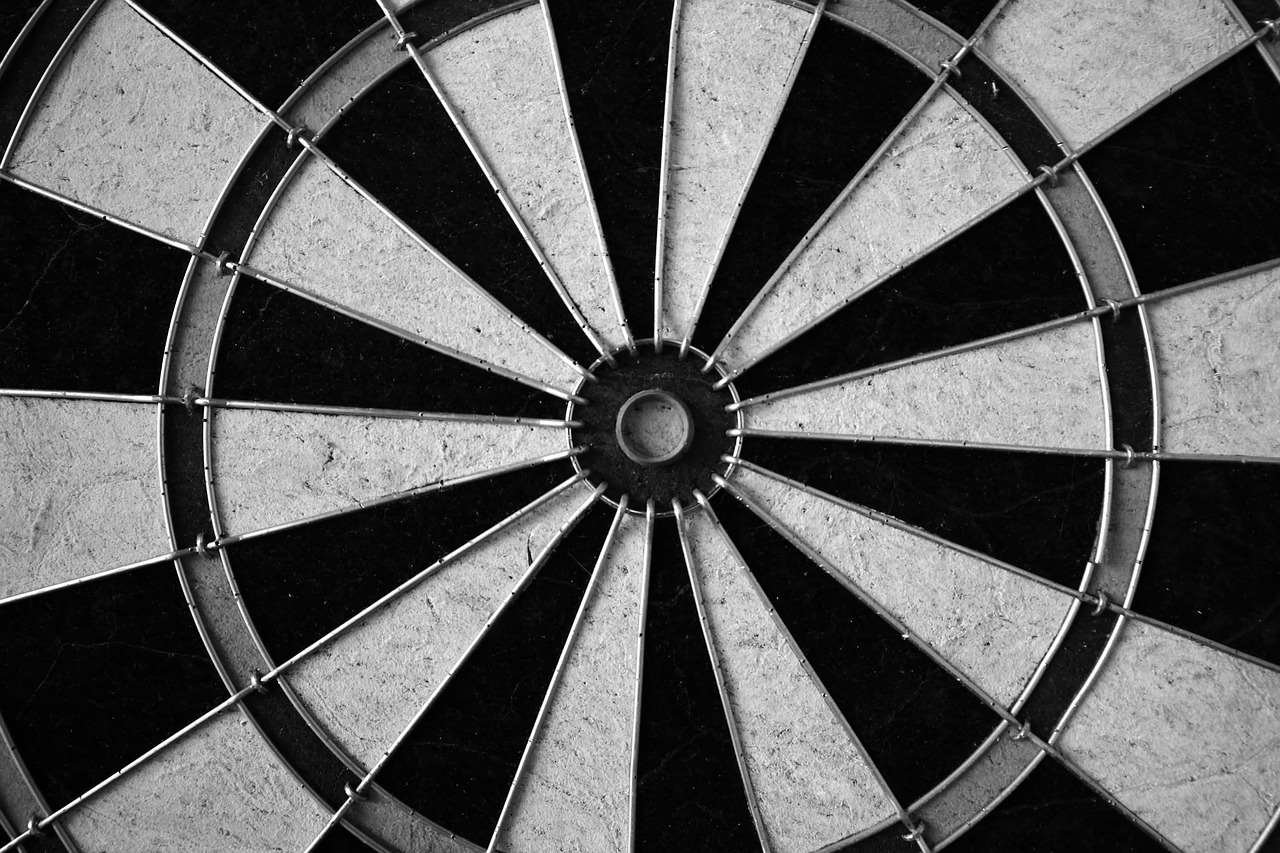The ideal **darts barrel length** hinges on your grip and throwing style; finding the right length significantly impacts control and consistency. In this article, we’ll explore how **darts barrel length** influences your game, how to measure it, and how to choose the right one for you, including other factors like weight and material.
⚠️ Still Using Pen & Paper (or a Chalkboard)?! ⚠️
Step into the future! The Dart Counter App handles all the scoring, suggests checkouts, and tracks your stats automatically. It's easier than you think!
Try the Smart Dart Counter App FREE!Ready for an upgrade? Click above!
Understanding Darts Barrel Length and Its Impact
The barrel is the main gripping point of the dart, and its length is a crucial factor in how the dart feels and flies. Too short, and you might feel cramped. Too long, and you could lose control. Darts barrel length is measured from the point where the barrel meets the point, to the end of the barrel where it meets the shaft. Different lengths suit different grips, so finding the perfect match is essential for consistent throws.

A shorter barrel (typically under 48mm) can be beneficial for front-grippers, allowing for a more natural feel and closer grouping. A longer barrel (over 54mm) might suit those who grip further back, providing more stability. The optimal **darts barrel length** will enable you to hold the dart comfortably and execute a smooth, repeatable throwing motion.
The Science Behind the Feel
Think about it – a longer barrel naturally shifts the center of gravity further forward. This can result in a straighter flight, but it demands greater control. A shorter barrel positions the weight closer to your hand, potentially improving maneuverability, but possibly at the expense of stability. Experimenting with different lengths is key to discovering what feels most natural in your hand and produces the best results on the board. Another influencing factor is the dart’s weight.
Measuring Your Existing Darts Barrel Length
Before diving into buying new darts, it’s a good idea to measure the **darts barrel length** of your current darts. This provides a baseline for comparison. Grab a set of calipers or a precise ruler. Measure from the base of the point where it meets the barrel, to the very end of the barrel where it connects to the shaft. Record this measurement carefully. This information, combined with your grip style, will help guide your selection of new barrels.
Understanding your current setup is vital for informed decision-making. You can also assess the overall dart weight, dart flights with rings, and shaft length.
Factors to Consider When Choosing a Darts Barrel Length
Selecting the right **darts barrel length** involves considering a range of factors beyond just personal preference. These include your grip style, your throwing style, and the overall dart weight. Let’s delve deeper into each of these aspects.
Grip Style
As mentioned earlier, your grip style is a primary determinant of the ideal barrel length. Front-grippers typically favor shorter barrels, allowing for closer finger placement to the point and enhanced control. Mid-grippers often find a comfortable balance with medium-length barrels, while back-grippers may benefit from longer barrels, providing increased stability and leverage. Pay attention to where your fingers naturally fall on the barrel and choose a length that accommodates your grip without feeling cramped or awkward. This consideration links directly to your finger placement and pressure points on the dart.
Throwing Style
Your throwing style, whether a smooth, controlled release or a more forceful flick, also influences the optimal barrel length. Players with a smoother, more deliberate throwing motion might find greater accuracy with a slightly longer barrel, which can aid in maintaining a consistent trajectory. Those with a faster, more aggressive flick may prefer a shorter barrel, allowing for quicker adjustments and a more responsive feel. Observe your own throwing style and consider how different barrel lengths might complement or hinder your natural motion.
Dart Weight
The dart weight and barrel length are interconnected. A heavier dart might feel more balanced with a longer barrel, distributing the weight more evenly. Conversely, a lighter dart could feel more responsive with a shorter barrel. Experimenting with different weight and length combinations is crucial for finding the perfect synergy that suits your individual playing style. Remember, heavier darts tend to be more stable, while lighter darts offer increased maneuverability. Don’t overlook this balancing act.

Common Darts Barrel Materials
The material a dart barrel is made from influences its grip, durability, and cost. The most common materials are:
- Tungsten: Dense and durable, allowing for slimmer barrels and tighter groupings. More expensive but preferred by serious players.
- Brass: More affordable but less dense than tungsten, resulting in thicker barrels. Suitable for beginners and casual players.
- Nickel Silver: A middle ground between brass and tungsten in terms of price and performance.
When choosing a material, consider your budget and playing frequency. If you play regularly, investing in tungsten barrels is a worthwhile investment. For occasional play, brass or nickel silver can be sufficient.
Experimentation is Key
Ultimately, the best way to determine the ideal **darts barrel length** for you is through experimentation. Try different lengths and weights to see what feels most comfortable and delivers the best results on the board. Visit a local darts shop and ask to try out different darts before making a purchase. Pay attention to how the dart feels in your hand, how it flies, and how consistently you can hit your target. Don’t be afraid to deviate from conventional wisdom and find what works best for your unique style.
Consider purchasing a few different sets of darts with varying **darts barrel length** to test during practice. Take notes on your performance with each set and analyze which length provides the most consistent accuracy and comfort. Record your scores and evaluate your throws to quantify the influence of the barrel length. Consider using a darts scoreboard app android to track your progress and identify patterns.

The Importance of Grip Texture and Barrel Shape
Beyond **darts barrel length**, the grip texture and barrel shape also play significant roles in dart control. Knurled, ringed, or smooth barrels offer different levels of grip. Choose a texture that provides a secure hold without being too abrasive. Barrel shapes can be straight, tapered, or bomb-shaped, each affecting weight distribution and aerodynamics. A straight barrel offers a consistent grip along its length, while a tapered barrel can promote a smoother release. Bomb-shaped barrels tend to concentrate the weight towards the front, potentially aiding in stability. The best grip and shape are highly subjective and depend on your individual preferences.
Don’t underestimate the impact of seemingly minor details like grip texture. A textured grip can provide a more secure hold, especially in humid conditions. However, too much texture can cause discomfort or hinder a smooth release. Experiment with different grip textures and barrel shapes to find the combination that optimizes your control and consistency. Always aim for a comfortable and natural feel.
Finding the Right Darts Oche
Once you’ve chosen your ideal darts barrel length, you’ll want to ensure you have the proper setup at home. Getting the correct distance from your dartboard to the throwing line, or oche, is crucial for consistent play. Consider purchasing a darts oche mat sale to ensure you always have the right distance marked. The standard distance is 7 feet 9 1/4 inches (2.37 meters). Using a mat can also protect your floor from stray darts.

Advanced Considerations: Balance and Aerodynamics
For experienced players, fine-tuning balance and aerodynamics can further enhance performance. The distribution of weight within the barrel, often referred to as the balance point, can significantly impact flight characteristics. A forward-balanced dart tends to fly straighter, while a rear-balanced dart offers more control. Aerodynamic features, such as grooves or scallops, can also influence flight stability and reduce drag. Experiment with different balance points and aerodynamic features to optimize your darts for your specific throwing style and playing conditions. Remember to also consider your dart flights with rings as this can affect dart flight also.
Consider consulting with a professional darts coach or experienced player for personalized advice on balance and aerodynamics. They can provide valuable insights based on your throwing style and help you identify subtle adjustments that can make a significant difference in your game. A good coach can also help you identify and correct any flaws in your throwing technique.
Maintaining Your Darts
Proper maintenance is essential for prolonging the lifespan of your darts and ensuring consistent performance. Regularly clean your barrels with a soft cloth to remove dirt and oil. Check your points for sharpness and replace them when necessary. Inspect your shafts for cracks or damage and replace them promptly. By taking care of your darts, you can ensure they remain in optimal condition for years to come.

If you’re looking for a way to keep score while practicing with your darts, consider using a darts scorer io or visit Free dart score app.
Conclusion
Choosing the right **darts barrel length** is a personal journey that requires experimentation and careful consideration of your grip, throwing style, and preferences. By understanding the factors that influence barrel length and exploring different options, you can find the perfect darts to elevate your game. Don’t be afraid to try different lengths and weights, and remember to prioritize comfort and consistency. Find your ideal **darts barrel length** and enjoy the game!
Ready to find your perfect darts? Visit your local darts shop or browse online retailers to explore the wide range of options available. Start experimenting today and take your dart game to the next level!
Hi, I’m Dieter, and I created Dartcounter (Dartcounterapp.com). My motivation wasn’t being a darts expert – quite the opposite! When I first started playing, I loved the game but found keeping accurate scores and tracking stats difficult and distracting.
I figured I couldn’t be the only one struggling with this. So, I decided to build a solution: an easy-to-use application that everyone, no matter their experience level, could use to manage scoring effortlessly.
My goal for Dartcounter was simple: let the app handle the numbers – the scoring, the averages, the stats, even checkout suggestions – so players could focus purely on their throw and enjoying the game. It began as a way to solve my own beginner’s problem, and I’m thrilled it has grown into a helpful tool for the wider darts community.